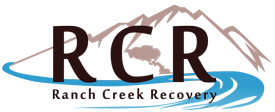What is an epidemic? The terminology alone can conjure up thoughts of social devastation and mass hysteria, such as uncontrollable diseases plaguing society or extinction level occurrences wiping out whole sections of the planet.
The reality of an epidemic, however, can prove to be deceivingly sinister and far harder to gauge and monitor. It can slowly attack humanity, starting as a minor problematic scenario but steadily growing in size and severity until it becomes a massive problem with no immediate remedy.
In the case of the opioid epidemic, the impact that prescription pill and heroin addiction has had on the United States has left every region of the country scrambling to address the ever-expanding issue of opioid addiction.
From preemptive education programs to increasing the distribution of Narcan among first responders, efforts to curb opioid addiction and corresponding overdoses continues to garner state-wide attention.
California Opioid Epidemic
Keep reading to learn about the methods being implemented in California to combat the opioid epidemic and reduce the devastating social trends attributed to opioid addiction.
California’s Prescription Drug Overdose Prevention Initiative (PDOP)
The state of California has championed a collaborative effort between all local municipalities to identify problematic patterns within the health care system and address the opioid epidemic through cooperation and teamwork.
The overarching strategy consists of five separate components focused on addressing the various stages of opioid addiction through improved methods of education, increased social awareness, and increased treatment opportunities for both addicts and their prescribing physicians.
The five main components of the California based initiate consist of:
- Safe prescribing
- Access to Treatment
- Naloxone Distribution
- Public Education Campaign
- Data Informed/Driven Interventions
These five specific sections were identified during a statewide opioid workgroup consisting of the California Department of Public Health Director and various state partners. They were tasked with sharing information and developing collaborative prevention strategies to reduce prescription drug overdose deaths and addictions within the state.
Additionally, the workgroup provided a platform for state entities working to address opioid overdose and addiction to improve coordination and expand joint efforts.
This PDOP has actively promoted the Medical Board of California Prescriber Guidelines in order to establish universal prescribing procedures within the state between all licensed physicians. They have also developed a statewide media education campaign to guide all treatment providers and participating patients throughout the therapeutic process.
Working Collaboratively with Local Schools to Increase Education
The state of California has worked to establish comprehensive educational programs to implement within their school districts in order to create an open and effective dialogue with students regarding the dangers of opioid use and addiction.
They’ve empowered school leaders and teachers to create safe environments within their classrooms for discussing the opioid epidemic, while simultaneously establishing a positive culture to better facilitate student’s participation and engagement.
These educational programs have not only focused on providing the staff and students with increased information regarding the dangers of opioid addiction, but they’ve also provided education regarding opioid overdoses and how to implement treatment if faced with an emergency scenario. This
approach has empowered school staff to proactively address the opioid epidemic, as well as, encourage and support students involved with the recovery process.
Opioid Abuse in California is Still Alive, but the Fight Against it is Stronger Than Ever
These proactive and innovative measures have created a situation in which the State of California is not merely surviving the opioid epidemic, but they are actively working to combat the spreading disease of opioid addiction.
While their efforts are commendable, the involved program managers and participating clinical staff are acutely aware that the battle to defeat the opioid epidemic is very much alive.
Working collaboratively within the state has afforded treatment providers the means and resources to begin stemming the tide of opioid addiction, creating hope within the surrounding communities, and establishing a new sense of faith among individuals struggling with substance use disorders.
Life-Changing, Holistic Opioid Addiction Treatment at Ranch Creek Recovery
For any addict who wants to regain control over their entire life, you must believe that your life can
begin again. It is our firm belief at Ranch Creek Recovery that addicts can recover from their disease and can rebuild abstinent, productive lives.
If you are addicted to opioids or have a loved one who is in the grips of an opioid addiction, there is help.
We address addiction recovery and relapse prevention head on through our non-12-step, individualized, holistic addiction treatment programs. Our team of treatment experts will work one-on-one with you to create a custom treatment and recovery plan that will help you feel confident and ready to enter your new, sober life.
Learn more about Ranch Creek Recovery, including opiate detox and rehab programs.
Have questions? We’re here to help in any way we can. Contact us today.
Resources:
California Department of Public Health. Prescription Drug Overdose Prevention Initiative. Accessed August 21, 2018. https://www.cdph.ca.gov/Programs/CCDPHP/DCDIC/SACB/Pages/PrescriptionDrugOverdoseProgram.aspx.
U.S. Department of Education. Combating the Opioid Crisis: Schools, Students, Families. Accessed August 21, 2018. https://www.ed.gov/opioids.













